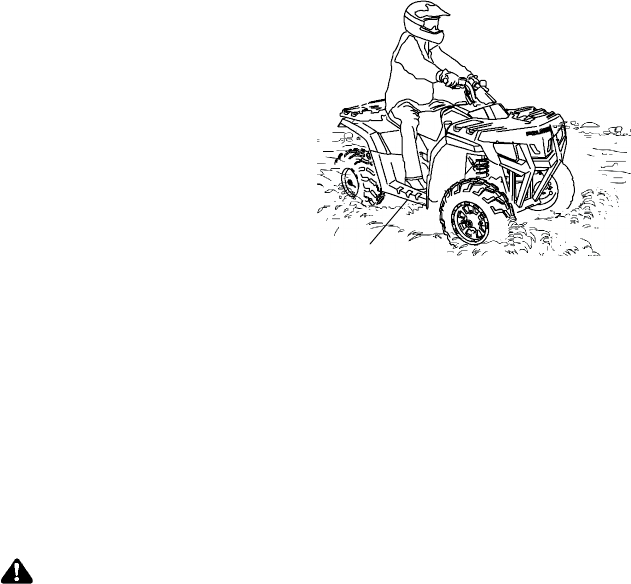
A
60
OPERATION
Driving Safely
Driving Through Water
Follow these procedures when operating through water:
1. Check water depths
and current before
crossing.
2. Avoid operating in
water deeper than the
bottom of the
footrests (A). If it’s
unavoidable, travel
slowly, balance your
weight carefully and
avoid sudden movements.
Maintain a slow and
steady forward motion.
Do not make sudden turns, stops or throttle changes.
3. Choose a crossing where both banks have gradual inclines.
4. Drive slowly. Avoid rocks and obstacles.
5. Wet brakes may have reduced stopping ability. Always test your
brakes after leaving water. If necessary, apply them lightly several
times to allow friction to dry out the pads.
After running the vehicle in water, it’s critical to have it serviced as
outlined in the maintenance chart. See page 65. The following areas
need special attention: engine oil, transmission oil, rear gearcase and
all grease fittings.
CAUTION
Major engine damage can result if the vehicle is not thoroughly
inspected after operation in water. Perform the services outlined
in the maintenance chart. If your vehicle becomes immersed or
is operated in water that exceeds the footrest level, take it to your
dealer for service before starting the engine.
If your vehicle becomes immersed, and it’s impossible to take it to a
dealer before starting it, follow t he steps described on page 79. Have
the vehicle serviced by your dealer at the first opportunity.


















